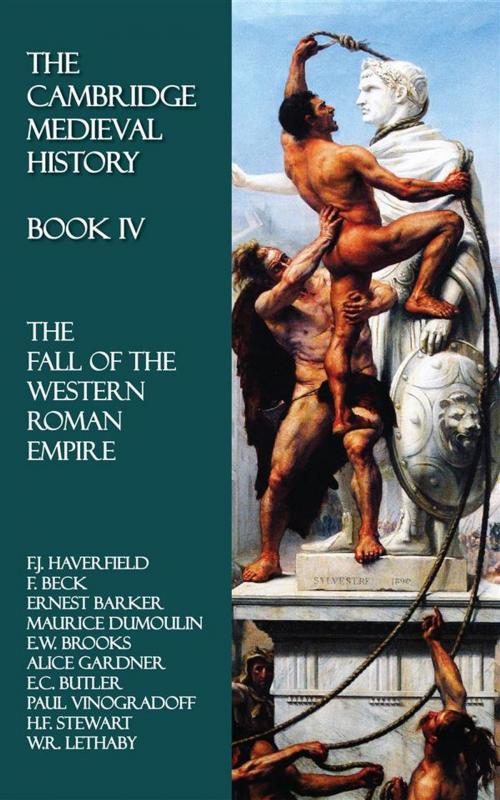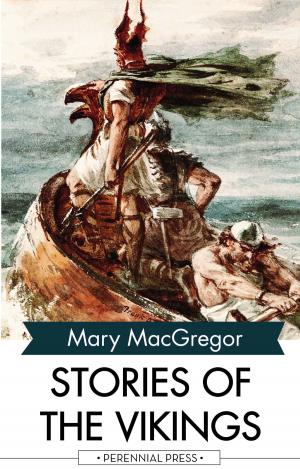The Cambridge Medieval History - Book IV
The Fall of the Western Roman Empire
Nonfiction, History, Civilization, Ancient History| Author: | F.J. Haverfield, F. Beck, Ernest Barker, Maurice Dumoulin, E.W. Brooks, Alice Gardner, E.C. Butler, Paul Vinogradoff, H.F. Stewart, W.R. Lethaby, J.B. Bury-020edt | ISBN: | 9781531230456 |
| Publisher: | Perennial Press | Publication: | February 24, 2016 |
| Imprint: | Language: | English |
| Author: | F.J. Haverfield, F. Beck, Ernest Barker, Maurice Dumoulin, E.W. Brooks, Alice Gardner, E.C. Butler, Paul Vinogradoff, H.F. Stewart, W.R. Lethaby, J.B. Bury-020edt |
| ISBN: | 9781531230456 |
| Publisher: | Perennial Press |
| Publication: | February 24, 2016 |
| Imprint: | |
| Language: | English |
This process of history may be said to have entered on its effective stage in the West with Alaric's invasion of Italy. But it had been present, as a potentiality and a menace, for many years before Alaric heard the voice that drew him steadily towards Rome. The frontier war along the limes was as old as the second century. The pressure of the population of the German forests upon the Roman world was so ancient and inveterate, and so much of that population had in one way or another entered the Empire for so long a period, that when the barrier finally broke, the flood came as no cataclysm, but as something which was almost in the natural order of things. There may have been movements in Central Asia which explain the final breach of the Roman barriers; but even without invoking the Huns to our aid, we can see that at the beginning of the fifth century the Germans would finally have passed the limes, and the Romans at last have failed to stem their advance, owing to the simple operation of causes which had long been at work on either side. Among the Germans population had grown by leaps and bounds, while subsistence had increased in less than an arithmetical ratio; and the necessity of finding a quieta patria, an unthreatened territory of sufficient size and productivity, with an ancient tradition of more intensive culture than they had themselves attained, had become for them a matter of life and death. Among the Romans population had decayed for century after century, and the land had gone steadily out of cultivation, until nature herself seemed to have created the vacuum into which, in time, she inevitably attracted the Germans. The rush begins with the passage of the Danube by the Goths in 376, and is continued in the passage of the Rhine by the Vandals, Alans, and Sueves in 406. A hundred years after the passage of the Danube the final result of the movement begins to appear in the West. Thepraefecture of Gaul now sees in each of its three former dioceses Teutonic kingdoms established—Saxons and Jutes in the Britains; Visigoths (under their great king Euric) in the Seven Provinces of Gaul proper; Sueves (along with Visigoths) in the Spains. In the praefecture of Italy two of the three dioceses are under powerful barbarian rulers: Odovacar has just made himself king of Italy, and Gaiseric has long been king of Africa; while the diocese of Illyricum is still in the melting-pot...
This process of history may be said to have entered on its effective stage in the West with Alaric's invasion of Italy. But it had been present, as a potentiality and a menace, for many years before Alaric heard the voice that drew him steadily towards Rome. The frontier war along the limes was as old as the second century. The pressure of the population of the German forests upon the Roman world was so ancient and inveterate, and so much of that population had in one way or another entered the Empire for so long a period, that when the barrier finally broke, the flood came as no cataclysm, but as something which was almost in the natural order of things. There may have been movements in Central Asia which explain the final breach of the Roman barriers; but even without invoking the Huns to our aid, we can see that at the beginning of the fifth century the Germans would finally have passed the limes, and the Romans at last have failed to stem their advance, owing to the simple operation of causes which had long been at work on either side. Among the Germans population had grown by leaps and bounds, while subsistence had increased in less than an arithmetical ratio; and the necessity of finding a quieta patria, an unthreatened territory of sufficient size and productivity, with an ancient tradition of more intensive culture than they had themselves attained, had become for them a matter of life and death. Among the Romans population had decayed for century after century, and the land had gone steadily out of cultivation, until nature herself seemed to have created the vacuum into which, in time, she inevitably attracted the Germans. The rush begins with the passage of the Danube by the Goths in 376, and is continued in the passage of the Rhine by the Vandals, Alans, and Sueves in 406. A hundred years after the passage of the Danube the final result of the movement begins to appear in the West. Thepraefecture of Gaul now sees in each of its three former dioceses Teutonic kingdoms established—Saxons and Jutes in the Britains; Visigoths (under their great king Euric) in the Seven Provinces of Gaul proper; Sueves (along with Visigoths) in the Spains. In the praefecture of Italy two of the three dioceses are under powerful barbarian rulers: Odovacar has just made himself king of Italy, and Gaiseric has long been king of Africa; while the diocese of Illyricum is still in the melting-pot...















